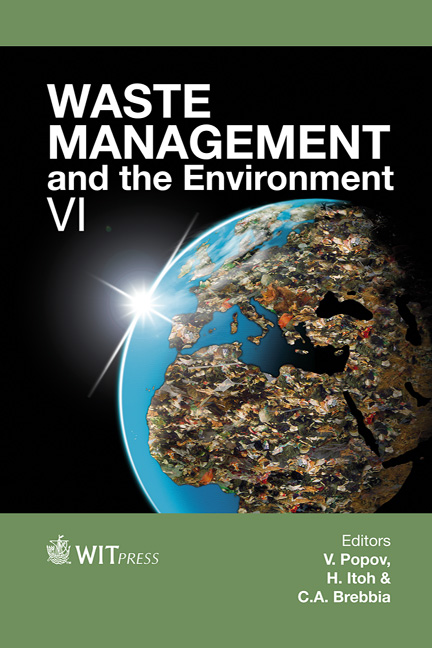Numerical Simulation Of Nitrogen Groundwater Pollution For Proper Management Of Cow Manure
Price
Free (open access)
Transaction
Volume
163
Pages
11
Page Range
343 - 353
Published
2012
Size
720 kb
Paper DOI
10.2495/WM120311
Copyright
WIT Press
Author(s)
S. Tsuchiya, T. Furuichi & K. Ishii
Abstract
About 20 million tons of cow manure is generated in Hokkaido, Japan, each year. Approximately 94% of this manure is reported to be recycled. However, the actual amounts of cow manure generated and of manure applied to pastures as compost or soil improver are not entirely clear, and so the reported rates of cow manure recycling are unlikely to represent the realities of current cow manure management. It is possible that excessive amounts of manure are being applied to pastures, leading to nitrate-nitrogen leaching and groundwater pollution. Therefore, it is necessary to assess the mass balance of nitrogen in the system to determine appropriate management strategies for cow manure. In this study, the nitrogen mass balance was calculated for cow manure during all stages of the process, from its generation to its application as a compost or soil improver. The nitrogen mass balance was determined through site investigations. Assuming a typical model of dairy farming, the actual amount of nitrogen applied in pastures was calculated in terms of nitrogen use efficiency, depending on vegetation type. The potential for groundwater pollution was evaluated by numerical simulations based on the nitrogen mass balance. The results showed that when large amounts of manure are applied to pastures, excess nitrogen will be present in the system, which may be susceptible to leaching and lead to groundwater pollution. Methods for cow manure management are discussed based on the results of the numerical simulations. Keywords: cow manure, nitrogen mass balance, nitrate, groundwater pollution.
Keywords
cow manure, nitrogen mass balance, nitrate, groundwater pollution.





